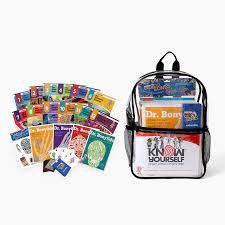Being a teacher comes with its fair share of responsibilities and challenges. One of the duties that teachers face is to undergo periodic evaluations to ensure they are meeting the expectations and standards of their profession. During these evaluations, certain terms and phrases are used that may be unfamiliar or confusing. In this article, we will explore ten commonly used teacher evaluation terms and what they really mean.
1. Observable Behaviors
This term refers to actions undertaken by teachers that can be easily observed and assessed. Examples include how they deliver instructions, engage students in lessons, provide feedback, or manage their classrooms. Observable behaviors are key factors in the evaluation process as they help determine a teacher’s effectiveness.
2. Professional Development
Professional development involves participating in training programs or workshops aimed at enhancing a teacher’s skills and knowledge. These opportunities help educators stay up-to-date with the latest teaching practices, hone new abilities, and contribute to their overall growth in the field.
3. Learning Goals
These are explicit statements outlining what students should know or be able to do by the end of a specific lesson or unit. Learning goals help teachers clearly communicate expectations to students and serve as guidelines when planning instruction and assessment strategies.
4. Formative Assessment
Formative assessment refers to the ongoing process of collecting evidence on student learning during instruction. Teachers use various strategies like quizzes, observation, or group work to analyze students’ understanding, provide feedback, and adjust their teaching methods accordingly.
5. Summative Assessment
In contrast to formative assessment, summative assessment gauges students’ understanding at the end of an instructional period (such as a grading period). It provides a snapshot of overall student performance through final exams, projects, or portfolios.
6. Differentiation
Differentiation is the process of tailoring instruction to address individual students’ learning needs and preferences. By differentiating instruction, teachers create opportunities for all learners to access the curriculum and achieve success.
7. Classroom Climate
Classroom climate refers to the overall atmosphere and learning environment within a classroom. Factors that contribute to a positive climate include strong teacher-student relationships, clear expectations, supportive learning spaces, and a sense of belonging.
8. Data-Driven Instruction
This term describes teaching practices that are based on data gathered from assessments, observations, or other sources that inform decisions about instructional strategies or interventions. Data-driven instruction helps teachers tailor their methods to meet the specific needs of their students.
9. Growth Mindset
The concept of growth mindset is based on the belief that individuals can develop their intelligence and abilities over time. Teachers fostering a growth mindset encourage students to embrace challenges, see effort as being essential for success, and view setbacks as learning opportunities.
10. Professional Learning Community (PLC)
A PLC is a group of educators who engage in collaborative work aimed at improving teaching practices and enhancing student achievement. Through ongoing professional conversations, resource-sharing, and problem-solving, PLCs foster continuous improvement and sustains teacher growth.
Understanding these ten evaluation terms can help educators navigate the assessment process more effectively and grow as professionals. As teachers become familiar with these concepts, they will be better equipped to address evaluators’ feedback, enhance their instructional practice, and support student success in the long term.











